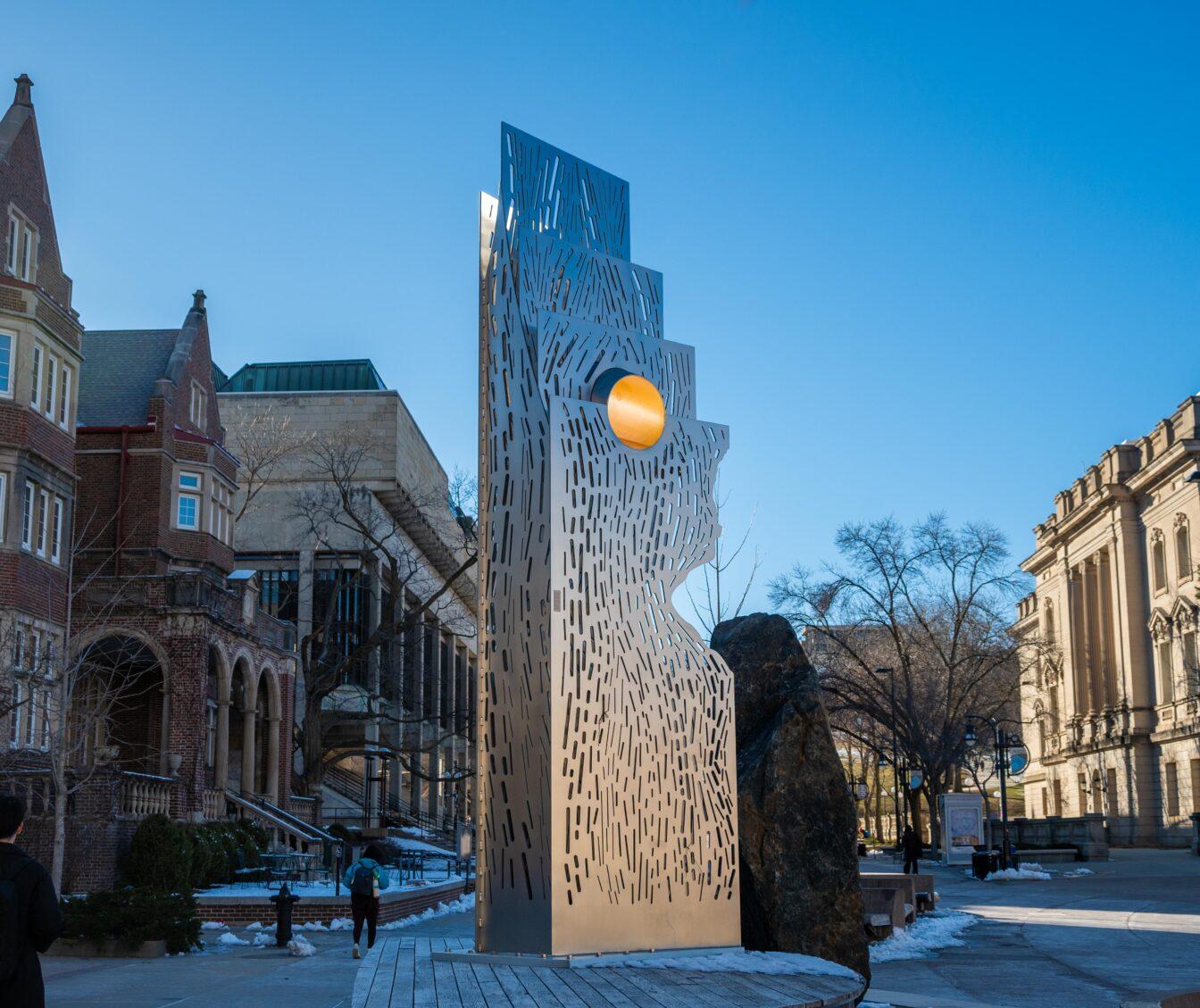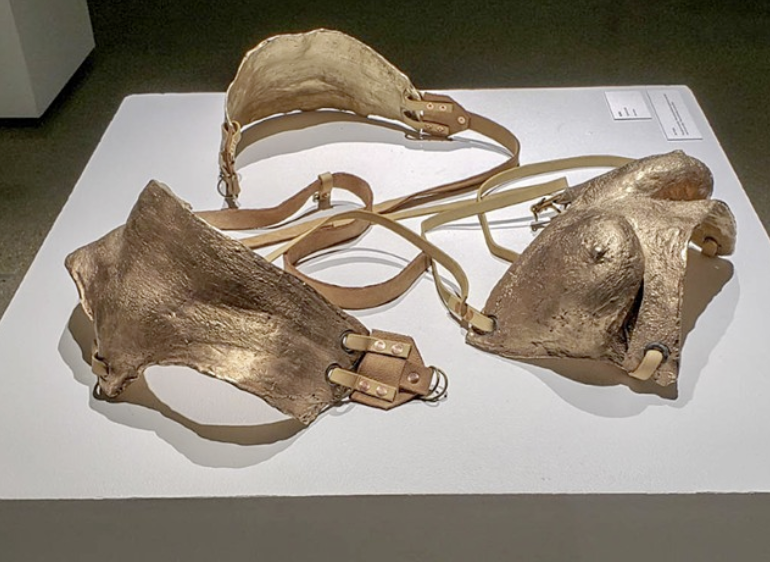Within UW’s School of Human Ecology lies several select boldly-colored pieces of fabric reminiscent of a culture that has lived on for centuries. These textiles, selected from the Helen Louise Allen Textile Collection, were chosen in collaboration with the Little Eagle Arts Foundation, a Ho-Chunk arts organization.
Pieces of linen cover the fabrics, indicating their original purpose within Native American culture. These objects were specially handcrafted for the use of those who have passed away, and those visiting the exhibit may accordingly choose whether they want to see these sacred objects.
A new exhibit in Chazen’s Garfield Gallery explores relationship between science fiction, literature
The exhibit where these objects were taken from — Intersections: Indigenous Textiles of the Americas — aims to provide a deeper understanding of the intersectionality of the indigenous culture and its development within the Western Hemisphere. One of its themes, motion, emphasizes the movement of people and the trade of cultural phenomena, displaying objects exchanged between tribes. Including objects such as a 19th century leather bag adorned with intricately-sewn beads made from Ojibwe glass and a Peruvian satchel.
In this regard, “motion” not only refers to the movement within the Native American sphere but also across countries including pieces from Peru, Ecuador, Mexico and the U.S.
Another theme, ancestors, pays homage to the collective memory involved in building culture and communities, proudly displaying the identities passed down from elders within the exhibit’s pieces.
One of the most prominent examples showcased was a blanket from Mexico decorated with small triangles seen throughout Native American textiles from generation to generation. These triangles, made with vegetable dye, display contrasting colors of indigo and blood-orange and tell of the unity formed through fabric weaving. Experienced tribespeople taught the younger generation how to incorporate traditional symbols that apprise others of their past.
Distinguished lecturer discusses Ho-Chunk land UW was built on
The Indigenous Textiles exhibit is a product of UW-Madison’s efforts to acknowledge its place within Ho-Chunk land and pay respect to the silencing and subjugation of entire cultures. By displaying its lasting objects, indigenous people are given back some power historically taken from them.
The exhibit is up until Dec. 6, and admission is free during exhibit times. Those who want a comprehensive insight into the flourishing of indigenous culture during a time of oppression and imperialism must take a look at these fabrics.



















